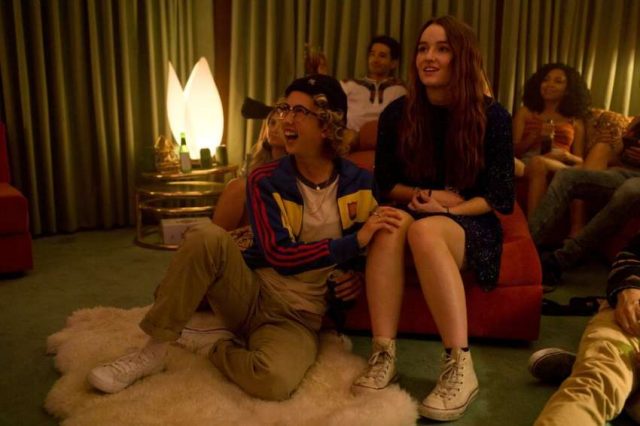
LGBTI comedy Booksmart stars Beanie Feldstein and Kaitlyn Dever as Molly and Amy, two overachieving besties about to graduate high school.
As they realize their lazy school friends are going to the same Ivy League colleges they’re going to, this BFF duo decides to do something absolutely unprecedented: go to a party. Or, thanks to some exceptionally poor planning, three in one night.
This beautifully directed movie by Olivia Wilde isn’t revolutionary in its plot, but it’s refreshing in the way it portrays its characters.
Amy, Molly and their friends are actual teenagers. They act like today’s 17-year-olds would, rather than mimicking adults by delivering lines no one would say at that age.
Moreover, they’re a perfect, inclusive, diverse ensemble which, thank god, doesn’t shy away from having openly LGBTI or non-white characters.
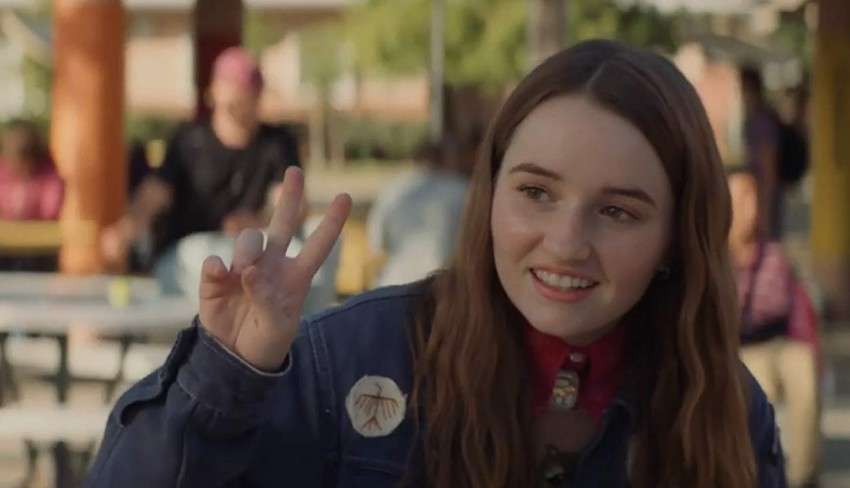
Dever as Amy | Photo: United Artists Releasing
Warning: the rest of this article contains spoilers for Booksmart and some old queer movies you should have already watched at this point
What strikes my bisexual self the most, however, is that Amy’s homosexuality is presented on screen in the most natural way. Her parents know and are super supportive, and so are her closest friends.
Even if normalizing same-sex attraction among teenagers was the only merit of Booksmart – and it’s not as the movie has many – this would still be a great, woke comedy of our times.
So great, in fact, that I wish it had come out when I was a teenager.
Positive onscreen representation can work wonders when you’re young and questioning your own sexual identity.
I’m not sure whether I would have been able to process my attraction to girls earlier than my mid-20s, had Booksmart come out when I was 17. What I’m sure of is that I would have been able to process it in a healthier way.
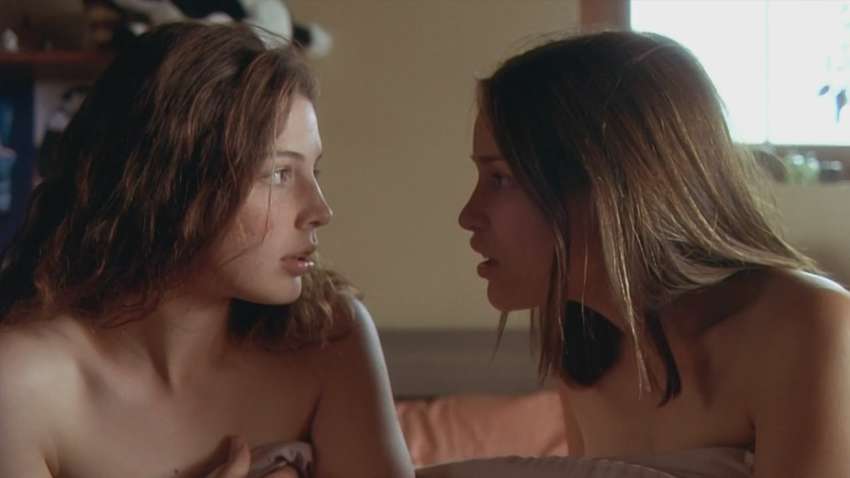
When they realize Mischa Barton’s character has been spying on them all night… | Photo: LionsGate
Most of the queer movies I watched growing up – and there weren’t many to begin with – were brimming with guilt or shame.
Lost And Delirious was one of the very first LGBTI films I ever saw.
A poetic yet tragic story of same-sex love set in a boarding school. The 2001 movie stars Piper Perabo and Jessica Paré as two roommates exploring their mutual attraction while their younger, shy friend Mischa Barton was creeping up on them.
I was 11 when it was released and I ended up watching it so many times I lost count.
I grew up thinking that a girl attracted to another girl was a recipe for tragedy. And that somehow you needed to have a pet falcon to be cool and get the attention of other girls.
Needless to say, one of the two protagonists dies in the finale. This isn’t an unlikely move for most queer movies, always focusing on the struggles of being LGBTI rather than on the positive aspects of a same-sex relationship.
What if I just want to watch a movie where the same-sex couple not only survives but also, how visionary, gets the ‘happily ever after’ straight pairs normally get in 2000s romcoms?
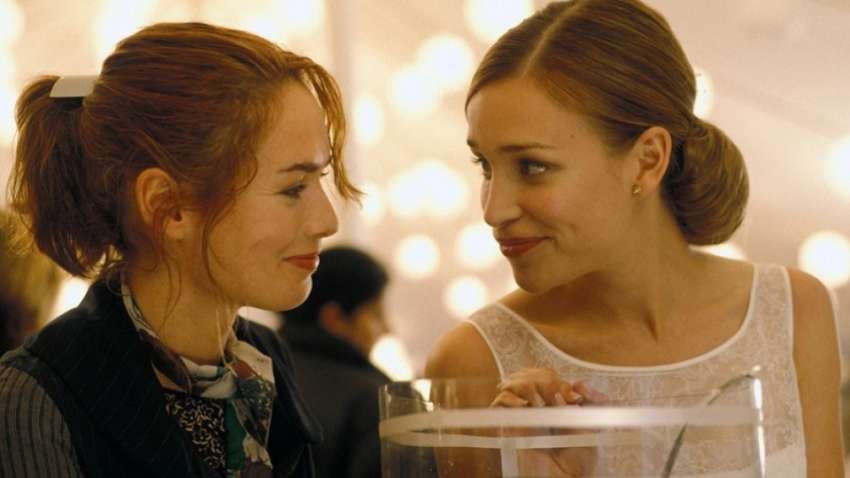
In Imagine Me & You, Rachel literally meets Luce at her own wedding… to a man. | Photo: United International Pictures
So I stuck with Piper Perabo and onto a different movie. It was 2005 when Imagine Me & You was released, starring Lena Headey way before her days.
Sure, everyone survives in this one and Rachel and Luce do end up together. Yet, I couldn’t help but feel sorry for Heck (Matthew Goode), the guy Rachel leaves a few months into their marriage.
Even though Perabo’s character Rachel is definitely bisexual, she never actually says the word.
Is her new relationship dismissing what she had with Heck, a guy she cared for and ended up marrying? Yes, it is.
Rachel’s own journey to self-discovery and happiness necessarily implies that someone else is getting hurt in the process.
Not the kind of fictional representation one might be looking for when they’re unsure about their identity.

Rooney Mara and Cate Blanchett are perfection in Carol. | Photo: StudioCanal
Ten years later, I became obsessed with Todd Haynes’ Carol.
Again, I wasn’t sure about my own identity. And again, this movie starring Cate Blanchett and Rooney Mara in amazing performances wasn’t the happiest of the lot.
The audience gets a hint that Carol and Therese will start a life together in the ending, but this comes after unspeakable tribulations, including Carol losing custody of her daughter.
It was 1952, some might argue. But shouldn’t fictional stories from the past resurface at a certain moment in time to say something about the present? What Carol was telling us was that being LGBTI wasn’t easy back then, and still isn’t.
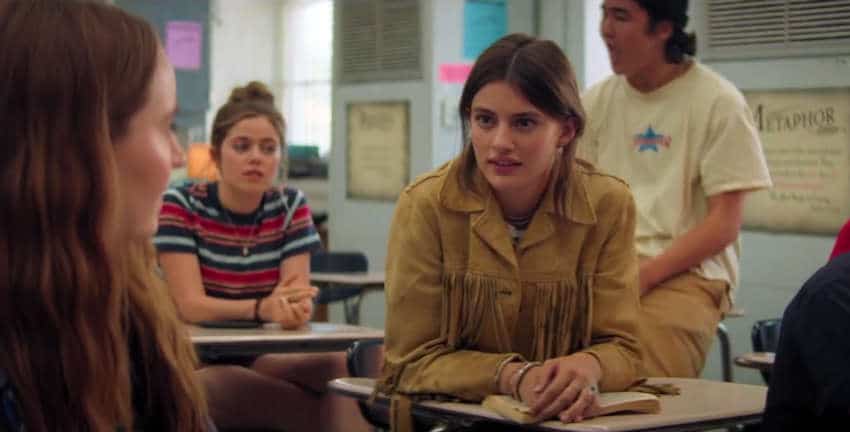
Diana Silvers as Hope in Booksmart. | Photo: United Artists Releasing
In Booksmart, Amy talks about sex and the girl she likes in the most awkward, yet real way. Ryan isn’t Amy’s ‘girl crush’, a once-in-a-blue-moon detour from heteronormativity, but simply a crush.
When Amy found out Ryan might not be into her after all, she doesn’t dwell in despair. She simply hooks up with someone else. You go, girl.
Two queer girls at the same high school? Yes, and there’s more. Booksmart has two other LGBTI characters, albeit a little on the clichéd side.
Nonetheless, such a pool of queer characters in a movie that isn’t queer as such shows mainstream audiences that LGBTI isn’t really an exception. It has never been, despite what pop culture has presented us with.
Booksmart is groundbreaking in its own rights as it finally features a lesbian teenager who addresses her own sexuality in an unapologetic way. Because there’s simply nothing to apologize for.







